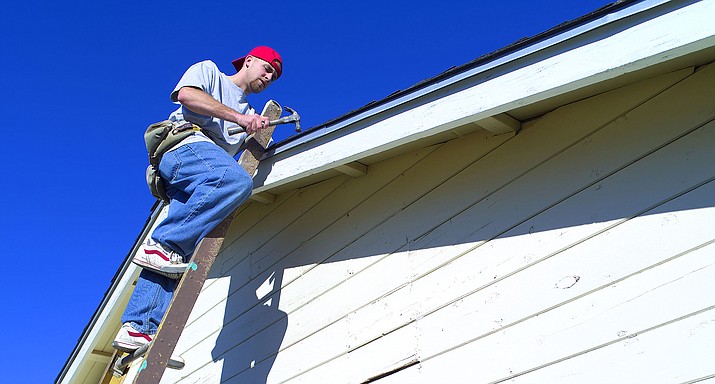
Don’t underestimate the significance of choosing the right roof for your home.
A roof is the primary defence a home has against the elements. It provides protection against wind, rain and snow, as well as shields the interior from the heat. In addition to its function, it is also a key part of the curb appeal of your home.
Depending on the material composition, roofs can last anywhere from 10 to 50 years. Homeowners usually know it’s time to replace a roof without even venturing outside, due to the appearance of ceiling leaks or discolouration. Wet or darkened wood or rusty nails in the attic can also be a sign.
Water can run along a rafter often appearing on a ceiling rooms away from the location of the leak. This can make it a challenge to find a leak, but it’s best to do a thorough check anytime wetness or discolouration is evident anywhere in the home. Water leaks only escalate and cause more damage over time.
If you are choosing the roofing material for your new home or re-roofing an existing home, here’s a handy overview of the various types of materials available on the market.
Asphalt shingles: The three-tab asphalt shingle is available in a myriad of colours and is the most commonly used roofing material due to its reasonable price.
Architectural shingles: Similar to an asphalt shingle, it is thicker and the layers are staggered to give the roof a more architectural look. These shingles are only slightly more expensive than asphalt shingles, which still makes them a good value.
Cedar shakes and shingles: Manufactured from either cedar or pine, they give an upscale appearance. Life spans differ depending on the availability of old growth cedar. They can be expensive to install, require periodic cleaning to remove mildew or moss, and may need re-oiling for preservation.
Metal roofs: An ideal choice for industrial or agricultural structures or country homes where snow is frequent. They can range from relatively inexpensive galvanized steel and light-weight aluminum to pricey copper. With life spans varying from 40 to 50 years, they can provide good value.
Slate: This hard stone material is very strong and sheds snow and ice very well. However, the weight of slate requires a more substantial roof structure, and the cost makes it less popular among today’s homeowners.
Ceramic: Tile roofs are among the most expensive due to specialized skills needed for installation of the heavy tiles as well as the roof structure required to hold the tile weight. Even with a life expectancy of 60 to 80 years, it is not normally a practical choice for most homeowners.
Concrete tiles are attractive, available in a variety of colours and can be custom-colour manufactured for an additional cost. They come with a 50-year warranty but have not gained the same popularity as they enjoy in Europe due to their more substantive appearance.
Synthetic composites offer the benefit of looking like a natural material with the added benefits of performance, durability and longevity; won’t rot, blister or crack; they are resistant to insects, mould and mildew; fire retardant and basically are maintenance free. As you would expect, they cost due to their durability.
Rubber/synthetic: Available in Canada for the last 10 years, these are growing in popularity due to their environmental value (manufactured from recycled tires and plastics), their similar look to slate or cedar shakes and durability that justifies a 50-year warranty.
Read more: http://www.lfpress.com/2016/04/07/bang-on-roofing-material-comes-in-plenty-of-options
The article Roofing material comes in plenty of options Find more on: dublin.elevateroofing.ie/
from http://dublin.elevateroofing.ie/roofing-material-comes-plenty-options/

